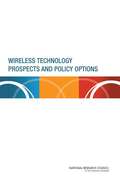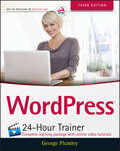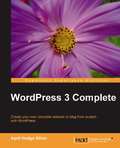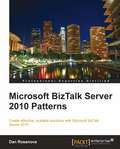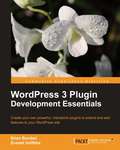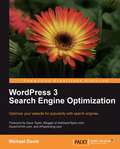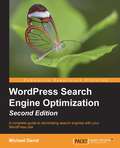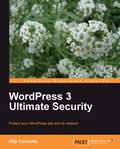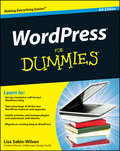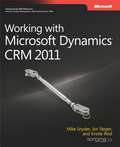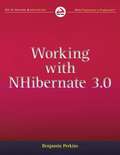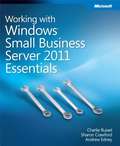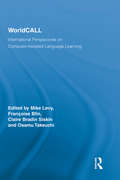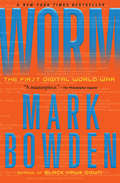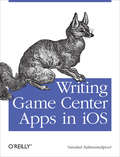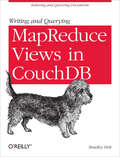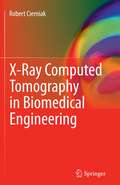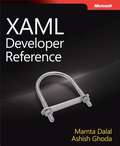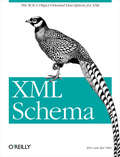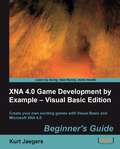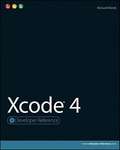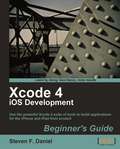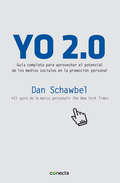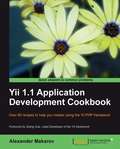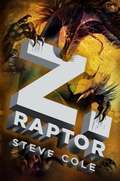- Table View
- List View
Wireless Technology Prospects and Policy Options
by National Research Council of the National AcademiesThe use of radio-frequency communication--commonly referred to as wireless communication--is becoming more pervasive as well as more economically and socially important. Technological progress over many decades has enabled the deployment of several successive generations of cellular telephone technology, which is now used by many billions of people worldwide; the near-universal addition of wireless local area networking to personal computers; and a proliferation of actual and proposed uses of wireless communications. The flood of new technologies, applications, and markets has also opened up opportunities for examining and adjusting the policy framework that currently governs the management and use of the spectrum and the institutions involved in it, and models for allocating spectrum and charging for it have come under increasing scrutiny. Yet even as many agree that further change to the policy framework is needed, there is debate about precisely how the overall framework should be changed, what trajectory its evolution should follow, and how dramatic or rapid the change should be. Many groups have opinions, positions, demands, and desires related to these questions--reflecting multiple commercial, social, and political agendas and a mix of technical, economic, and social perspectives. The development of technologies and associated policy and regulatory regimes are often closely coupled, an interplay apparent as early as the 1910s, when spectrum policy emerged in response to the growth of radio communications. As outlined in this report, current and ongoing technological advances suggest the need for a careful reassessment of the assumptions that inform spectrum policy in the United States today. This book seeks to shine a spotlight on 21st-century technology trends and to outline the implications of emerging technologies for spectrum management in ways that the committee hopes will be useful to those setting future spectrum policy.
WordPress 24-Hour Trainer
by George PlumleyThe eagerly anticipated second edition, completely updated for WordPress 3.1As an open source content management system, WordPress allows users to easily build feature-rich web sites with no programming experience. This unique book-and-video package is a friendly, self-paced beginners guide to the latest release of WordPress. Lessons are focused on practical, everyday tasks that users will need to create and maintain their sites: entering new content, creating new pages, managing menus, making content search-engine friendly. Plus you'll find lots of tips based on years of experience teaching people to use WordPress.You'll also learn how to extend the functionality of WordPress by using the thousands of plugins available. Connecting to social media, creating membership and e-commerce sites, setting up events calendars, making your site mobile-friendly--these are just some of the plugins you'll be introduced to. Each lesson in the book is supplemented by an instructional video intended to enhance your learning experience. Plus, a trouble-shooting appendix addresses various issues to help you solve any challenges you may face.Note: As part of the print version of this title, video lessons are included on DVD. For e-book versions, video lessons can be accessed at wrox.com using a link provided in the interior of the e-book.
WordPress 3 Complete
by April Hodge SilverThis a comprehensive step-by-step tutorial packed with screenshots and examples for easy and quick pickup.This book is a guide to WordPress for both beginners and those who have slightly more advanced knowledge of WordPress. If you are new to blogging and want to create your own blog or website in a simple and straightforward manner, then this book is for you. It is also for people who want to learn to customize and expand the capabilities of a WordPress website.You do not require any detailed knowledge of programming or web development, and any IT-confident user will be able to use the book to produce an impressive website.
WordPress 3 Cookbook
by Ric ShrevesThis is a Packt Cookbook, which means it contains step-by-step instructions to achieve a particular goal or solve a particular problem. There are plenty of screenshots and explained practical tasks to make comprehension quick and easy. This book is not specifically for developers or programmers; rather it can be used by anyone who wants to get more out of their WordPress blog by following step-by-step instructions. A basic knowledge of PHP/XHTML/CSS/WordPress is desirable but not necessary.
WordPress 3 Plugin Development Essentials
by Brian Bondari Everett GriffithsThis book will provide an easy to understand, step-by-step approach to building your own WordPress plugins from scratch. We will construct a variety of plugins from the group up, demonstrating how to tap into a number of WordPress' development aspects, as well as how to prepare and release your plugin(s) to the public.This book is for WordPress users who want to learn how to create their own plugins and for developers who are new to the WordPress platform. Basic knowledge of PHP and HTML is expected, as well as a functional knowledge of how WordPress works from a user standpoint.
WordPress 3 Search Engine Optimization
by Michael DavidThis is a practical, hands-on book based around sound SEO techniques specifically applied to WordPress. Each chapter starts with a brief overview of the important concepts then quickly moves into practical step-by-step actions you can take immediately. Throughout the book, you'll get clear instructions and detailed screenshots, so you can see exactly what to do each step of the way. This book is written for anyone using WordPress, ranging from owners of business sites to website developers and blog owners. Any WordPress user who wants to sell products or services, or send out a message to the world will find that getting better rankings in the search engines will help them reach their goal faster. Some prior knowledge of WordPress is expected but no prior knowledge of search engine optimization is needed for this book. Readers will get a deeper level of knowledge on how to make their website rank better and attract more visitors.
WordPress 3 Search Engine Optimization
by Michael DavidThis is a practical, hands-on book based around sound SEO techniques specifically applied to WordPress. Each chapter starts with a brief overview of the important concepts then quickly moves into practical step-by-step actions you can take immediately. Throughout the book, you'll get clear instructions and detailed screenshots, so you can see exactly what to do each step of the way.This book is written for anyone using WordPress, ranging from owners of business sites to website developers and blog owners. Any WordPress user who wants to sell products or services, or send out a message to the world will find that getting better rankings in the search engines will help them reach their goal faster.Some prior knowledge of WordPress is expected but no prior knowledge of search engine optimization is needed for this book. Readers will get a deeper level of knowledge on how to make their website rank better and attract more visitors.
WordPress 3 Ultimate Security
by Olly ConnellyThis is a comprehensive essential guide to WordPress security written in a light style, which converts learning a really serious topic to an enjoyable read. It is packed with copy-paste solutions to security to suit all levels of security know-how.Just as WordPress is used by a broad spectrum of website owners, with varying degrees of security know-how, so WordPress 3 Ultimate Security is written to be understood by security novices and web professionals alike. From site and server owners and administrators to members of their contributing team, this essential A to Z reference takes a complex and, let's face it, frankly dull subject and makes it accessible, encouraging, and sometimes even fun. Even if you are a total newbie to security, you can transform an insecure site into an iron-clad fortress, safeguarding your site users, your content and, sooner or later, your stress level.
WordPress For Dummies, 4th Edition
by Lisa Sabin-WilsonThe bestselling guide to WordPress, fully updated to help you get your blog going! Millions of bloggers rely on WordPress, the popular, free blogging platform. This guide covers all the features and improvements in the most up-to-date version of WordPress. Whether you are switching to WordPress from another blogging platform or just starting your first blog, you'll find the advice in this friendly guide gets you up to speed on both the free-hosted WordPress. com version and WordPress. org, which requires the purchase of web hosting services, and figure out which version is best for you. You'll be able to take full advantage of the flexibility and usability of WordPress. WordPress is a state-of-the-art blog platform that emphasizes aesthetics, web standards, and usability Previous editions of this guide have sold more than 85,000 copies, and interest in blogging continues to explode Illustrates how to set up and maintain a blog with WordPress and how to use all the new features Covers both the free-hosted WordPress. com version and WordPress. org, which requires users to purchase web hosting services Written by an expert who works directly with developers and the cofounder of WordPress This guide helps bloggers quickly and easily take advantage of everything this popular blogging tool has to offer.
Working with Microsoft Dynamics® CRM 2011
by Mike Snyder Jim Steger Kristie ReidConfigure, adapt, and extend Microsoft Dynamics CRM 2011--guided by two of the leading implementation specialists in the field. Whether you're an IT professional, a developer, or a power user, you'll get pragmatic, hands-on insights for customizing CRM in your organization--with or without programming. Discover how to:Set up and configure your system Plan and configure security settings and information access Easily customize form attributes, views, and relationships Create and deploy custom reports Use xRM to quickly create and efficiently manage line-of-business applications Automate business workflows Extend Microsoft Dynamics CRM with scripts and assemblies
Working with NHibernate 3.0
by Benjamin PerkinsThis book provides examples using the IQuery, ICriteria, QueryOver, and LINQ to NHibernate API's within the context of an example Guitar Store inventory program. The reader is walked through the creation of a Microsoft SQL Server 2008 database, the creation of a Visual Studio 2010 solution consisting of 3 projects (a Window Presentation Foundation (WPF), a Console Application, and a Class Library). Each one utilizes the . NET 4. 0 framework. Then the reader is walked through the steps required to configure and use the many features available contained within NHibernate 3. 2. Further instructions and examples exist for the insertion of parent/child relationships, Session management, entity states (transient, persistent and detached), deletion, caching, and batching. The last chapter utilizes ASP. NET MVC 3 and jqGrid for the creation of an internet program for viewing the guitar inventory using NHibernate and the session per web request model. Table of Contents Chapter 1: Getting Started With Nhibernate 3 1 Chapter 2: Using Hql 53 Chapter 3: Using Icriteria 91 Chapter 4: Using Linq to Nhibernate 145 Chapter 5: Managing State and Saving Data 169 Chapter 6: Using Nhibernate with an Asp. Net Mvc 3 Application 203
Working with Windows® Small Business Server 2011 Essentials
by Sharon Crawford Charlie Russel Andrew EdneySet up and manage your own efficient, low-cost network Get up and running quickly with Windows® Small Business Server 2011 Essentials--and learn how to use this network solution to organize and help protect your business data. This hands-on guide provides extensive walkthroughs and tips to help you successfully deploy, manage, and support your company's network and applications. All you need is minimal IT knowledge. Discover how to: Plan your network infrastructure as your first, critical step Configure and maintain the network to help protect your data Create user accounts and connect client computers Manage shared server folders and set up permissions Install network printers and determine how they're shared Inspect your network's health with Performance Monitor Provide security-enhanced remote access via the web or a VPN Troubleshoot problems and be prepared in the event of a system failure
WorldCALL: International Perspectives on Computer-Assisted Language Learning (Routledge Studies in Computer Assisted Language Learning)
by Mike Levy Françoisee Blin Claire Bradin Siskin Osamu TakeuchiAs technological innovation continues to affect language pedagogy, there is an increasing demand for information, exemplars, analysis and guidance. This edited volume focuses on international perspectives in Computer-Assisted Language Learning (CALL) in all of its forms, including Technology Enhanced Language Learning, Network-Based Language Learning, Information and Communication Technologies for Language Learning.
Worm: The First Digital World War
by Mark BowdenFrom the bestselling author of Black Hawk Down, the gripping story of the Conficker worm—the cyberattack that nearly toppled the world. The Conficker worm infected its first computer in November 2008, and within a month had infiltrated 1.5 million computers in 195 countries. Banks, telecommunications companies, and critical government networks—including British Parliament and the French and German military—became infected almost instantaneously. No one had ever seen anything like it. By January 2009, the worm lay hidden in at least eight million computers, and the botnet of linked computers it had created was big enough that an attack might crash the world. In this “masterpiece” (The Philadelphia Inquirer), Mark Bowden expertly lays out a spellbinding tale of how hackers, researchers, millionaire Internet entrepreneurs, and computer security experts found themselves drawn into a battle between those determined to exploit the Internet and those committed to protecting it.
Writing Game Center Apps in iOS: Bringing Your Players Into the Game
by Vandad NahavandipoorNow that Apple has introduced the GameKit framework to its iOS SDK, you can integrate Game Center features directly into your iPhone and iPad apps. This concise cookbook shows you how it's done, with 18 targeted recipes for adding leaderboards, user authentication, achievements, multiplayer games, and many other features.How do you display players' scores and achievements? How do you create Game Center accounts and add friends? Each recipe in this book includes a simple code solution you can put to work immediately, along with a detailed discussion that offers insight into why and how the recipe works.Recipes include techniques to:Set up Game Center for an iOS AppUse block objects and Grand Central Dispatch to write Game Center appsAuthenticate a local player in Game CenterUse iTunes Connect to create leaderboards and achievementsRetrieve leaderboard and achievement information programmaticallyHandle players' state changes in multiplayer games
Writing and Querying MapReduce Views in CouchDB: Tools for Data Analysts
by Bradley HoltIf you want to use CouchDB to support real-world applications, you'll need to create MapReduce views that let you query this document-oriented database for meaningful data. With this short and concise ebook, you'll learn how to create a variety of MapReduce views to help you query and aggregate data in CouchDB’s large, distributed datasets.You'll get step-by-step instructions and lots of sample code to create and explore several MapReduce views through the course of the book, using an example database you construct. To work with these different views, you’ll learn how to use the Futon web administration console and the cURL command line tool that come with CouchDB.Learn how the Map and Reduce steps work independently and together to index your dataUse the example database to create several temporary views based on different criteriaDiscover the uses of Map and Reduce JavaScript functionsConvert your temporary views to permanent views within a design documentLearn several options for querying the data within your viewsLimit the number of results returned, skip some results, or reverse the order of the outputGroup your results by exact keys or by parts of keysBradley Holt, co-founder of the creative services firm Found Line, is a web developer and entrepreneur ten years of PHP and MySQL experience. He began using CouchDB before the release of version 1.0. Bradley is an active member of the PHP community, and can be reached at bradley-holt.com.
X-Ray Computed Tomography in Biomedical Engineering
by Robert CierniakComputed Tomography gives a detailed overview of various aspects of computed tomography. It discusses X-ray CT tomography from a historical point of view, the design and physical operating principles of computed tomography apparatus, the algorithms of image reconstruction and the quality assessment criteria of tomography scanners. Algorithms of image reconstruction from projections, a crucial problem in medical imaging, are considered in depth. The author gives descriptions of the reconstruction methods related to tomography scanners with a parallel X-ray beam, trough solutions with fan-shaped beam and successive modifications of spiral scanners. Computed Tomography contains a dedicated chapter for those readers who are interested in computer simulations based on studies of reconstruction algorithms. The information included in this chapter will enable readers to create a simulation environment in which virtual tomography projections can be obtained in all basic projection systems. This monograph is a valuable study on computed tomography that will be of interest to advanced students and researchers in the fields of biomedical engineering, medical electronics, computer science and medicine.
XAML Developer Reference
by Ashish Ghoda Mamta DalalYour expert guide to designing and building dynamic user interfaces Sharpen your application design and development skills using XAML--the declarative markup language used in Microsoft® Silverlight® and Windows® Presentation Foundation (WPF). Led by two XAML experts, you'll learn practical ways to build rich, interactive user interfaces with data integration capabilities and support for multimedia, graphics, and animation. This hands-on guide is ideal for Microsoft .NET developers and web designers alike. Discover how to: Control UI behavior and implement business logic with code-behind solutions Manage UI element positioning with the XAML layout system Use templates to customize UI elements--without affecting their functionality Apply different types of property and event systems in WPF and Silverlight Bind various kinds of data to your UI, and display them in the format you want Implement 2D and 3D vector graphics and animations Reuse control styles and properties to maintain consistency throughout your application
XML Schema: The W3C's Object-Oriented Descriptions for XML
by Eric van der VlistIf you need to create or use formal descriptions of XML vocabularies, the W3C's XML Schema offers a powerful set of tools for defining acceptable document structures and content. An alternative to DTDs as the way to describe and validate data in an XML environment, XML Schema enables developers to create precise descriptions with a richer set of datatypes?such as booleans, numbers, currencies, dates and times?that are essential for today?s applications.Schemas are powerful, but that power comes with substantial complexity. This concise book explains the ins and outs of XML Schema, including design choices, best practices, and limitations. Particularly valuable are discussions of how the type structures fit with existing database and object-oriented program contexts. With XML Schema, you can define acceptable content models and annotate those models with additional type information, making them more readily bound to programs and objects. Schemas combine the easy interchange of text-based XML with the more stringent requirements of data exchange, and make it easier to validate documents based on namespaces.You?ll find plenty of examples in this book that demonstrate the details necessary for precise vocabulary definitions. Topics include:Foundations of XML Schema syntaxFlat, "russian-doll", and other schema approachesWorking with simple and complex types in a variety of contextsThe built-in datatypes provided by XML SchemaUsing facets to extend datatypes, including regular expression-based patternsUsing keys and uniqueness rules to limit how and where information may appearCreating extensible schemas and managing extensibilityDocumenting schemas and extending XML Schema capabilities through annotationsIn addition to the explanatory content, XML Schemaprovides a complete reference to all parts of both the XML Schema Structures and XML Schema Datatypes specifications, as well as a glossary. Appendices explore the relationships between XML Schema and other tools for describing document structures, including DTDs, RELAX NG, and Schematron, as well as work in progress at the W3C to more tightly integrate XML Schema with existing specifications.No matter how you intend to use XML Schema - for data structures or document structures, for standalone documents or part of SOAP transactions, for documentation, validation, or data binding ? all the foundations you need are outlined in XML Schema.
XNA 4.0 Game Development by Example: Beginner's Guide – Visual Basic Edition
by Kurt JaegersThis book is a step-by-step tutorial that includes complete source code for all of the games covered. It adopts an engaging style to teach all the game development concepts. Each block of code is explained, and game development concepts are diagrammed and covered in detail. Each game begins with a concept description and concludes with suggestions for expanding on the finished game. If you are an aspiring game developer who wants to take a shot at creating games for the Microsoft Windows platform with the XNA Framework, then this book is for you. Using this book, you can get started with creating games without any game development experience. A basic knowledge of Visual Basic would be needed to kickstart your game development.
Xcode 4
by Richard WentkEverything you need to know to design, code, and build amazing apps Xcode 4 is Apple's newest version of the popular development suite for creating bleeding-edge OS X and iOS apps. Written by an experienced developer and Apple-focused journalist, this book not only covers developing for OS X but also for the entire family of iOS devices, including the iPhone, iPad, and iPod touch. You'll explore the newest tools for compiling, debugging, and finding and fixing common code errors so that you can look forward to improved, smooth-running code that is developed more efficiently than ever. Takes you step-by-step through the process of developing OS X and iOS applications using Xcode 4 Examines the benefits of Xcode 4, Apple's updated, free, object oriented programming environment Helps you tame the complex Xcode environment so you can develop amazing apps This book gets you up to speed on all the remarkable new features and redesigned user interface of Xcode 4 so you can get started creating phenomenal apps today.
Xcode 4 iOS Development Beginner's Guide
by Steven F. DanielThis step-by-step book guides you through the process of creating awesome iPhone apps using Xcode 4. As a beginner's guide, it focuses on getting you through all the major learning points in a smooth, logical order while showing you how to avoid some common pitfalls. If you want to learn how to build iPhone applications that compete with the rest and make your mark within the iPhone industry, this book is for you. You should have some basic programming experience with Objective-C, and a good understanding of OOP, as well as some knowledge of database design. No knowledge of Xcode 4 is required.
YO 2.0
by Dan SchawbelLos nuevos medios sociales abren un campo enorme de posibilidades en cualquier lugar del mundo. Para conseguir tus objetivos la estrategia más poderosa se basa en lograr diferenciarse mediante tu marca personal. Gracias a las herramientas de los nuevos medios, los blogs y las aplicaciones móviles, existen infinitas oportunidades para darte a conocer y conectar con otras personas.Tanto si estás buscando un trabajo, quieres dar un giro en tu carrera o aspiras a una promoción, Dan Schawbel , el gurú de la marca personal, te guía por el amplio territorio de los medios sociales y te muestra numerosos casos de éxito de personas que han construido sus marcas personales gracias a los medios sociales.Desde los sitios especializados en networking, como LinkedIn, Facebook o Twitter, hasta el potencial de los blogs, de los curriculums en video y de las aplicaciones móviles, Yo 2.0 representa una guía completa, práctica y actualizada para potenciar su marca personal y lograr sus objetivos profesionales.
Yii 1.1 Application Development Cookbook
by Alexander MakarovThis book is a collection of Yii recipes with chapters generally independent of each other. It is full of practically useful solutions and concepts explained with code and the required pictorial illustrations. If you are a developer with a good knowledge of PHP5, are familiar with the basics of Yii, and have tried to develop applications using Yii, then this book is for you. Knowledge of the object oriented approach and MVC pattern will be a great advantage as Yii uses these extensively.
Z. Raptor
by Steve ColeThirteen-year-old Adam Adlar used to have a normal life. Then his father created the most advanced video-game technology ever-one that uses a person's thoughts to control game characters, so that the characters are actually part of you. And scientists stole this technology to create hyper-evolved dinosaurs with a human's ability to learn . . . and a beast's ability to kill. Now packs of raptors populate a deserted island where the only law is survival. For the death-row inmates who were forced to live there as part of an experiment, survival was not an option. Now it's up to Adam and his dad to make sure the brutality stops. In his companion to Z. Rex, Steve Cole has once again written an absurdly commercial novel that will captivate imaginations, quicken pulses, and appeal to anyone who loves a good action film. .
